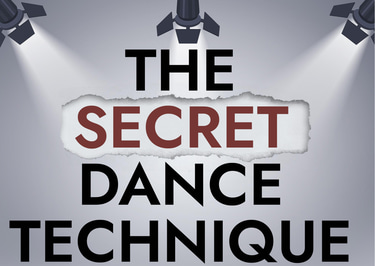What Research Suggests About Optimism in Dance (And Life)
3/9/20253 min read


Did you know that most of our thoughts tend to be negative? Research suggests only about 20% of our thoughts are positive. Instead of a full discussion on optimists and pessimists, let’s talk about realism. Positive and negative thoughts aren’t inherently more accurate than one another—so why do we default to negativity?
If we want to keep it real, we should aim for a balanced mindset—at least 50% positive thoughts. Personally, I try to lean into positivity as much as I can. Why? Because if both positive and negative thoughts are equally likely, why not choose the ones that drive us to take action and reach our goals? Optimism isn’t just wishful thinking; it’s a skill you can train, and science backs its benefits.
Why Are We Wired for Negativity?
Our ancestors relied on a negativity bias to survive—it was crucial for spotting threats in their environment. But these survival instincts don’t fit as neatly in today’s world. Sure, social fears like rejection from the role we want can feel intense, but they’re not life-threatening. When we push past those fears, we often find pride and accomplishment waiting on the other side.
Think about it: how often have you faced down anxiety or self-doubt, only to realize afterward that it was totally worth it? That moment of pride in overcoming negativity shows how much dwelling on fears can hold us back, while positive thinking fuels forward momentum.
How Optimism Shapes Your Reality
Let’s take a tough audition as an example. If 80% of your thoughts are negative, you’re likely to focus more on challenges than opportunities. The positive side of you might channel the pressure into motivation, seeing it as a chance to push yourself and showcase what makes your dancing unique. You know you bring something special to the space.
On the other hand, the negative side might focus on the talent of others, interpreting it as proof you don’t stand a chance. That intimidation could consume you, making it harder to perform at your best—or even stopping you from attending the audition altogether, giving you zero chance to reach your goal.
If you shift to at least 50% positive—or better yet, fully embrace optimism—you start to see opportunities instead of obstacles. This doesn’t mean ignoring reality; it’s about training your mind to look for possibilities.
Think about it this way: maybe only 1% of people achieve your goal, and you think, “That’s impossible.” But what if that 1% are the ones who stopped letting negativity make the decisions and leaned into positivity? Optimism isn’t just a feel-good vibe—it’s a strategy that builds over time. Little mental shifts, practiced consistently, can lead to big results.
Optimism in Dance
Now let’s talk more specifically about dance. The industry is competitive, and it’s easy to listen to the negativity:
“I’m not flexible enough.”
“I didn’t train at the top school.”
“I don’t have the natural talent.”
When we let these negative thoughts dominate, we start seeing confirmation everywhere. That choreographer? Of course, they favor someone more talented. That dancer? They’re just lucky. This mindset keeps us from trying harder, training more, and showing up for auditions.
Contrast that with someone who embraces positive thoughts:
“I can improve my flexibility with consistent effort.”
“My unique strengths make me stand out.”
“There’s room for everyone to succeed.”
This person stays motivated, works harder, and builds connections within the dance community. They position themselves for opportunities, whether through new skills, networking, or simply being in the right place at the right time.
The Long-Term Impact of Optimism
Now imagine these two dancers—one focused on negativity, the other on positivity—after a year. Who is more likely to achieve their goals?
This isn’t just about dance; it applies to life. Choosing positivity doesn’t mean ignoring challenges—it means empowering yourself to face them. The science-based case for optimism is well-supported: focusing on the positive increases your chances of success and happiness.
So, if positive and negative thoughts are equally realistic, why not choose the ones that help you thrive?
A Final Word
Trust me I’m not suggesting I am immune to negativity—I certainly feel the regular doubts and fears. But I love knowing that mental skills, like optimism, can be trained. With practice and consistency, we all can rewire our mindsets and focus on the thoughts that move us forward.
Choose positivity. Train your mind to see opportunities, and you’ll be amazed at the doors that open. Thanks for reading! Let this inspire you as much as it’s inspired me. Now go out there and dance with optimism!
If you're interested in learning more mental skills like this, check out my new book, The Secret Dance Technique—available on Amazon now!
If you are interested in online or live classes building mental skills through dance, check out my offerings here:
Find more articles like this on my blog and podcast at https://aprillorenzi.substack.com/.
Sources
https://www.verywellmind.com/negative-bias-4589618
https://intellectualtakeout.org/2019/02/why-positive-thinking-doesnt-work/
https://blog.myneurogym.com/new-study-you-have-6900-thoughts-a-day-dont-make-yours-negative/

Success starts here
Unlock your potential through mental and physical training.
© 2025. All rights reserved.
Contact:
This program is for educational purposes only
lorenziaprilauthor@gmail.com
